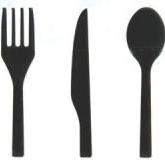-
Welcome to the eG Forums, a service of the eGullet Society for Culinary Arts & Letters. The Society is a 501(c)3 not-for-profit organization dedicated to the advancement of the culinary arts. These advertising-free forums are provided free of charge through donations from Society members. Anyone may read the forums, but to post you must create a free account.
Felafel/Falafel--Cook-Off 30
-
Similar Content
-
- 82 replies
- 13,954 views
-
eG Cook-Off #86: Rabbit 1 2 3 4 8
By David Ross,
- 198 replies
- 21,333 views
-
- 78 replies
- 34,116 views
-
- 174 replies
- 28,476 views
-
- 330 replies
- 59,633 views
-
-
Recently Browsing 0 members
- No registered users viewing this page.







Recommended Posts